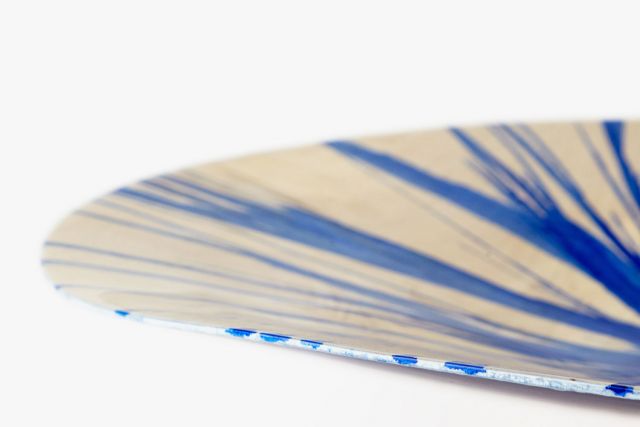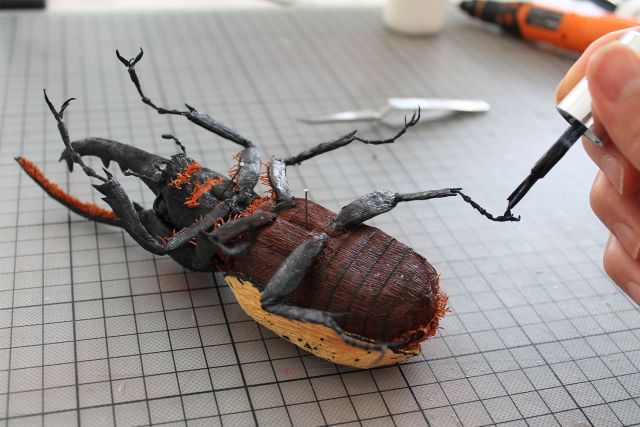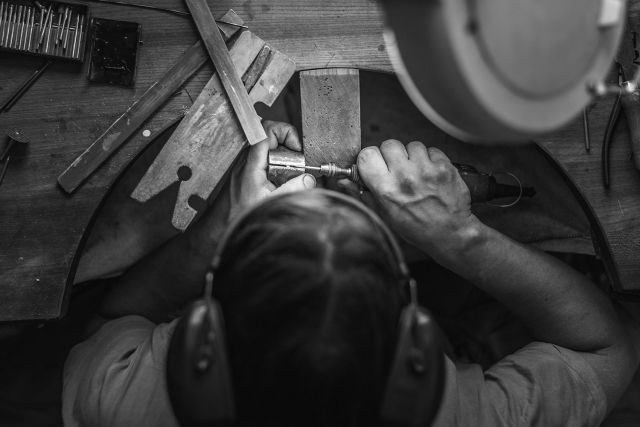This amorphous form consists of three distinct spherical elements. Incorporating a plastic structure reminiscent of honeycomb, these pieces have been reworked to fit together.
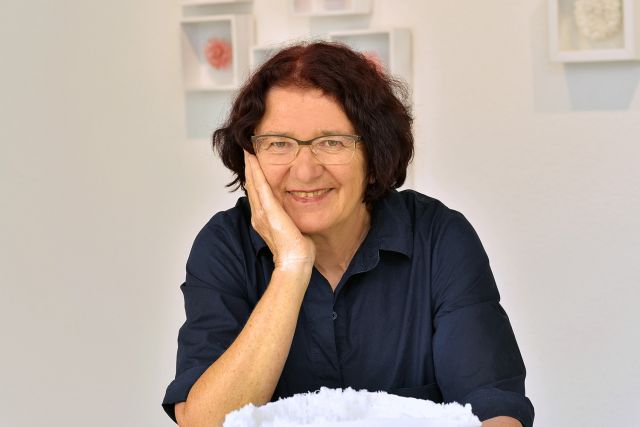
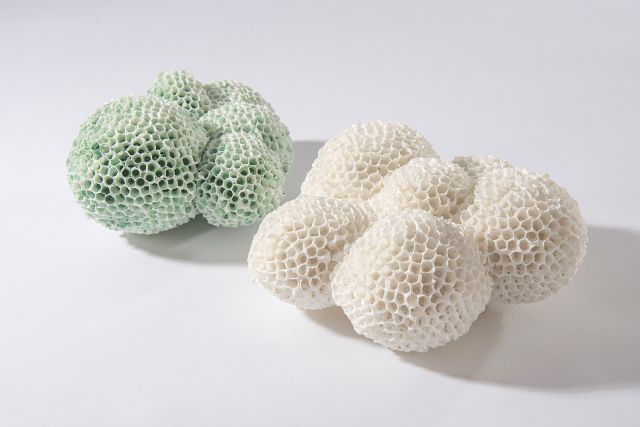
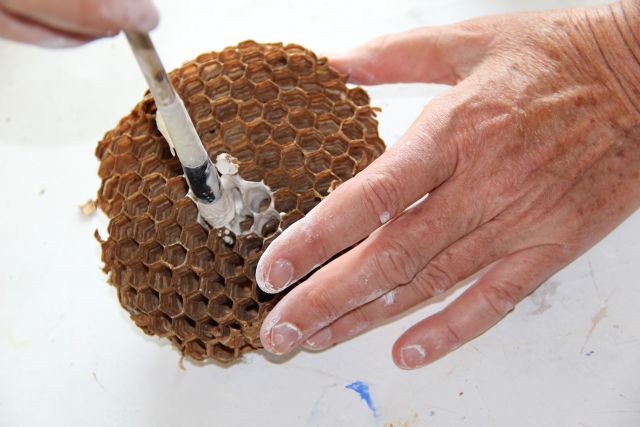
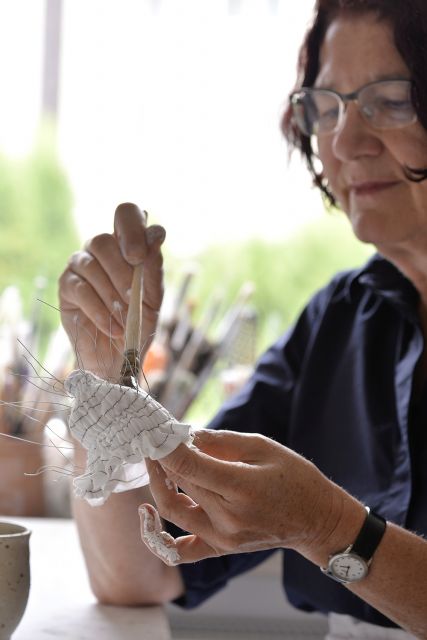
Heide Nonnenmacher
- Multimedia sculptor
- Nattheim, Germany
- Master Artisan
By appointment only
+49 1704764379
Porcelain to explore fossilisation
- • Heide's work revolves around the fossil phenomenon in her region of Germany
- • She started out as a functional potter before becoming more conceptual
- • She shows a playful interest in science in her works
Heide Nonnemacher admired her aunt, textile artist Lotte Hoffmann, as a child. "When we were with her, it was like we were in a magical world." Heide studied art to become a teacher. In parallel to this a friend taught her many ceramic techniques, and she opened her own pottery workshop in the mid-1980s. As a free artist, Heide's works are deeply rooted in her region. Nattheim is known for its unique natural phenomenon involving corals and sea urchins in sandstone. Heide's own research into species enables her to search for forms and creatures that will survive. Her choice of porcelain is deliberate, for in addition to being able to create fine details, it also gives her a clear sense of the aesthetics of Nattheim fossils.
Read the full interviewWorks
Photo: ©Doris Leuschner

Photo: ©Doris Leuschner
This object is made of two porcelain spheres attached by a plastic structure resembling honeycomb.

Photo: ©Doris Leuschner
At its most basic level, this creation appears as a somewhat bound sphere. Small spherical segments were created by the constriction during the making process. A plastic structure similar to that of a hornet's nest encases the original porcelain form.

Photo: ©Doris Leuschner
The porcelain ball is at the origin of this piece which was then 'expanded'. A 1cm dot was placed at the origin of the initial form, to emphasise the symbolism of the blossoming of the mutation.

Photo: ©Doris Leuschner
This is another of Heide Nonnenmacher's post-evolutionary forms. Using the mixed media technique, this porcelain object is a curved tubular shape with an opening either end.





